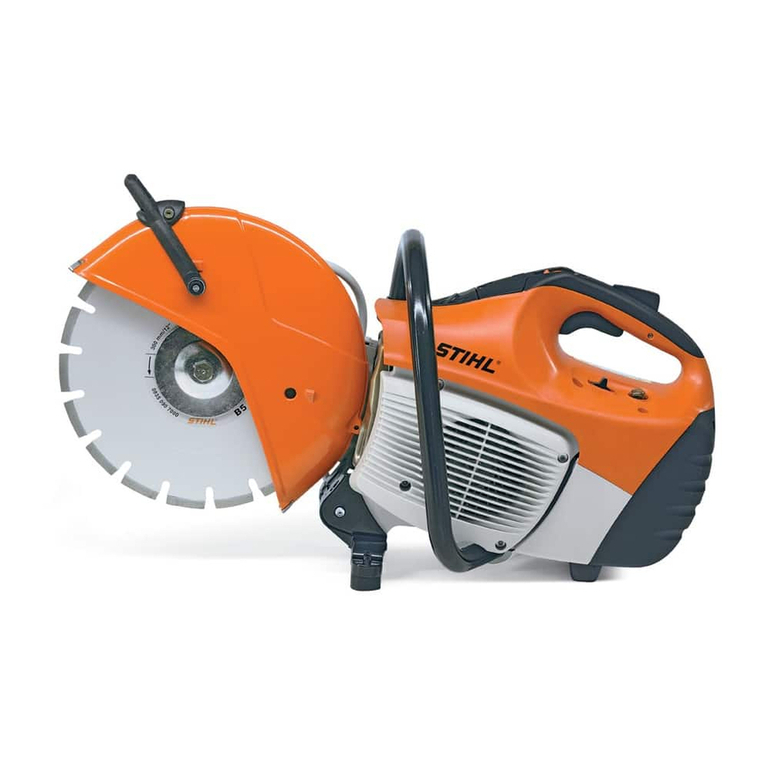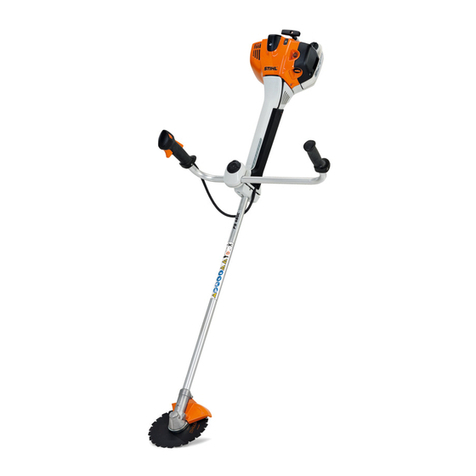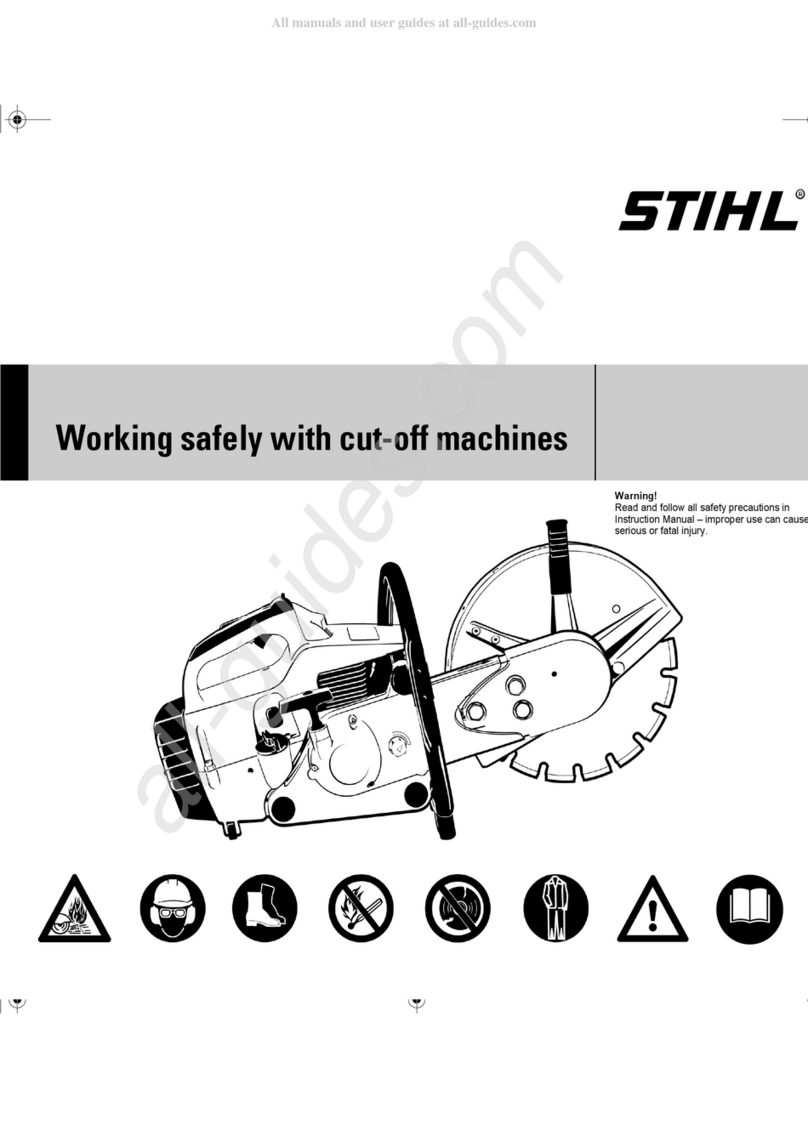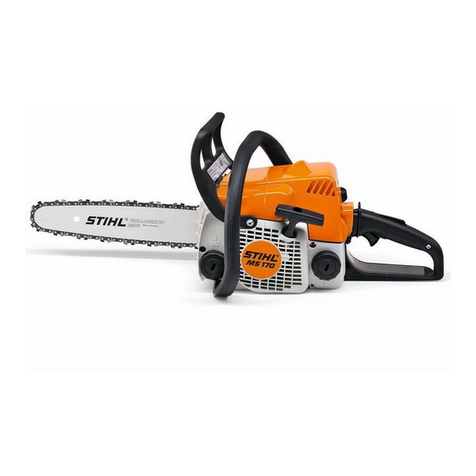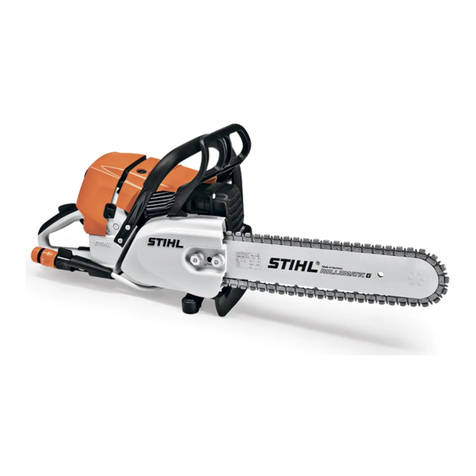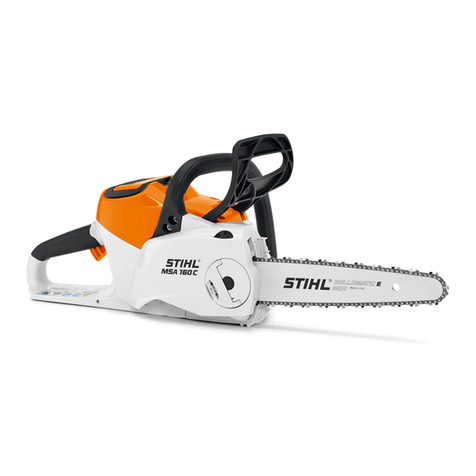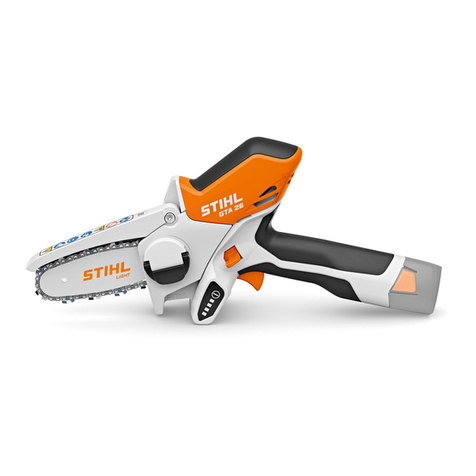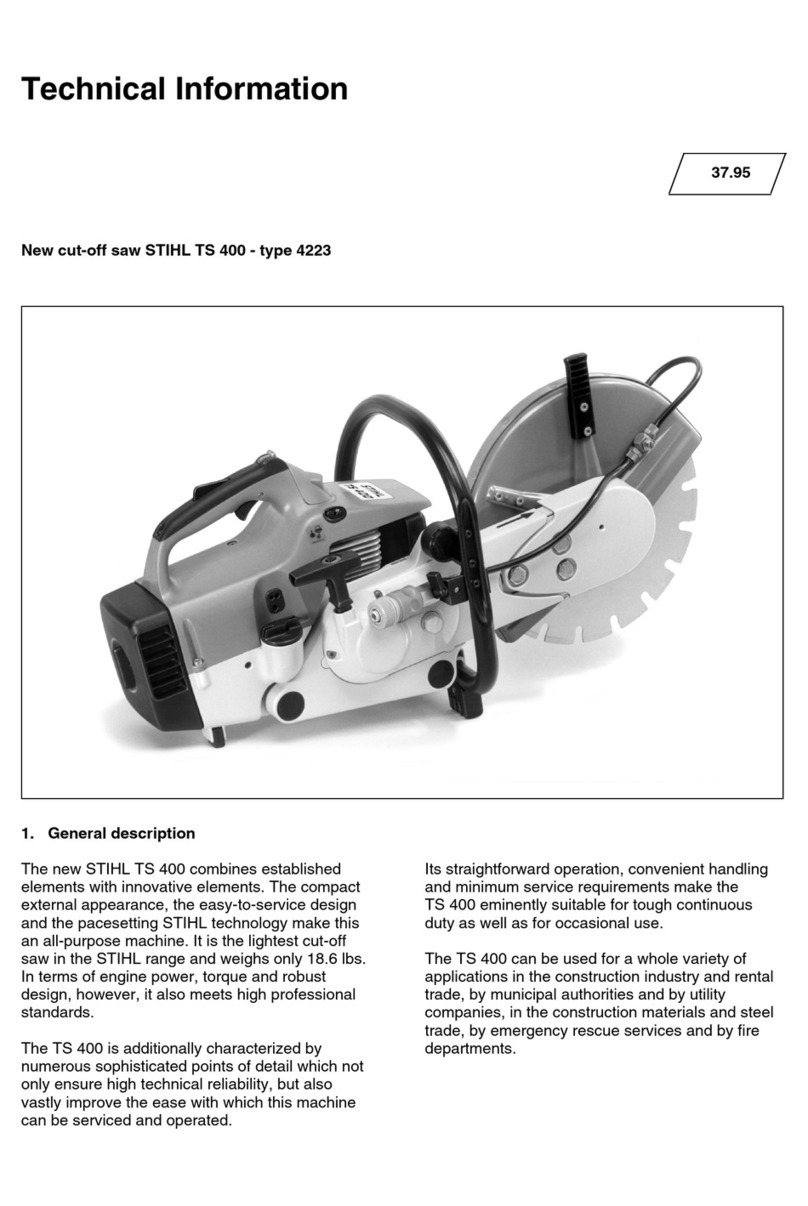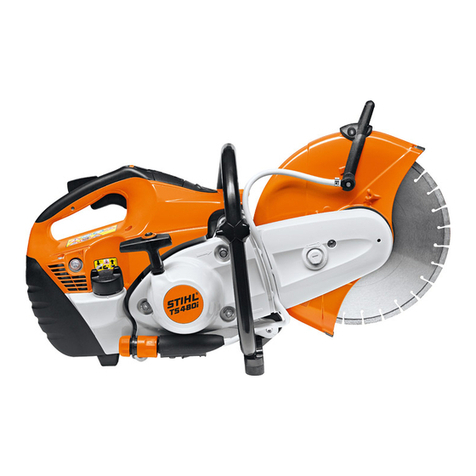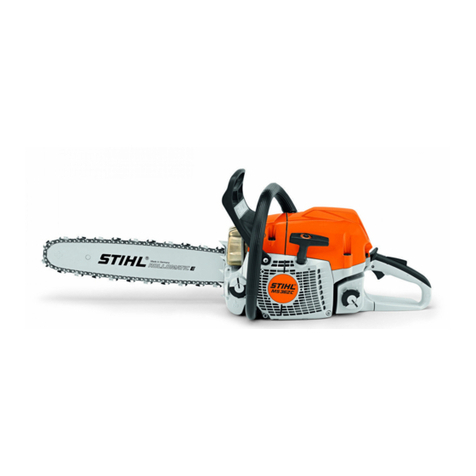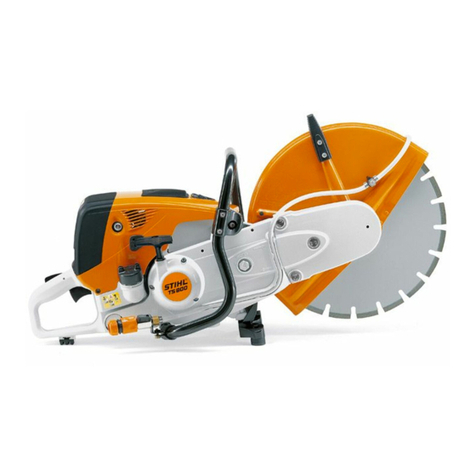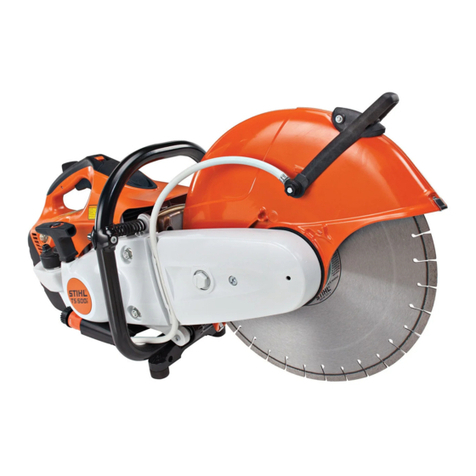
MS 291 C-Q
English
8
NTo return the cap to the open
position for installation, turn the cap
(with the grip up) until it drops fully
into the tank opening. Next, twist the
cap counterclockwise as far as it will
go (approx. 1/4 turn) – this will twist
the base of the cap into the correct
position. Then, twist the cap
clockwise, closing it normally.
NIf your cap still does not tighten
properly, it may be damaged or
broken; immediately stop use of the
unit and take it to your authorized
STIHL dealer for repair.
Screw Cap
The screwdriver end of the STIHL
combination wrench or other similar tool
can be used as an aid in tightening
slotted fuel filler caps.
See also the "Fueling" chapter in your
Instruction Manual for additional
information.
Before Starting
Take off the chain guard (scabbard) and
inspect the saw for proper condition and
operation. (See the maintenance chart
near the end of the instruction manual.)
For proper assembly of the bar and
chain follow the procedure described in
the chapter "Mounting the Bar and
Chain" of your instruction manual.
STIHL Oilomatic chain, guide bar and
sprocket must match each other in
gauge and pitch. Before replacing any
bar and chain, see the chapter entitled
"Specifications" in the instruction
manual and the sections "Kickback" and
the "ANSI B 175.1-2000 chain saw
kickback standard" below.
Keep the handles clean and dry at all
times; it is particularly important to keep
them free of moisture, pitch, oil, fuel mix,
grease or resin in order for you to
maintain a firm grip and properly control
your power tool.
Starting
Warning!
Unit vibrations can
cause an improperly
tightened fuel filler cap to
loosen or come off and
spill quantities of fuel. In
order to reduce the risk
of fuel spillage and fire, tighten the fuel
filler cap by hand as securely as
possible.
Warning!
Always check your power tool for proper
condition and operation before starting,
particularly the throttle trigger, throttle
trigger lockout, stop switch and cutting
tool. The throttle trigger must move
freely and always spring back to the idle
position. Never attempt to modify the
controls or safety devices.
Warning!
Never operate your power tool if it is
damaged, improperly adjusted or main-
tained, or not completely or securely
assembled.
Warning!
Check that the spark plug boot is
securely mounted on the spark plug – a
loose boot may cause arcing that could
ignite combustible fumes and cause a
fire.
Warning!
Proper tension of the chain is extremely
important. In order to avoid improper
setting, the tensioning procedure must
be followed as described in your man-
ual. Always make sure the hexagonal
nut(s) for the sprocket cover is (are)
tightened securely after tensioning the
chain in order to secure the bar. Never
start the saw with the sprocket cover
loose. Check chain tension once more
after having tightened the nut(s) and
thereafter at regular intervals (whenever
the saw is shut off). If the chain
becomes loose while cutting, shut off
the engine and then tighten. Never try to
adjust the chain while the engine is
running!
Warning!
To reduce the risk of fire and burn inju-
ries, start the engine at least 10 feet
(3 m) from the fueling spot, outdoors
only.




